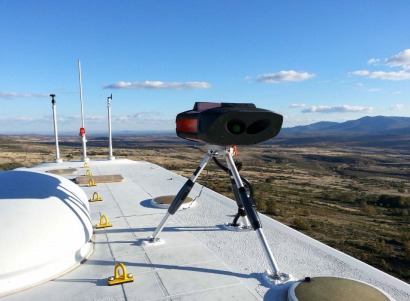
The problem was underperformance; the suspect was yaw misalignment.
But an analysis of the SCADA data - including measurements from a nearby met mast and the vane measurement from the wind turbine- was not enough to determine the correction needed.
That's when the company turned to a Wind Iris Lidar manufactured by Avent Lidar Technology. And it was been so happy with the results of a 30-day field trial, it's now purchased the nacelle-mounted Lidar to optimize the performance of all of its wind turbines.
During the field trial, the Wind Iris collected wind speed and direction data ahead of the turbine for 30 days. Analysis showed an average yaw error of seven degrees. A correction factor was then applied to the yaw measurement and 15 additional days of measurement using the Wind Iris revealed that the yaw error had been eliminated.
“By detecting and accurately quantifying the yaw misalignment, we were able to correct the error and gain significant AEP improvement,” said Cegeon Chan, wind resource manager at First Wind.
"Based on this evaluation, we decided to purchase a Wind Iris to optimize more turbines in our fleet,” Chan said.
By eliminating the yaw error, the annual energy production (AEP) of the wind turbine increased by 1.8 percent. This was calculated with a power curve estimation model using Wind Iris data, and it was also independently verified by comparing the relative increase in turbine production with nearby turbines that had not been optimized.
While project-specific revenue impacts for this case are not available, increasing the AEP of 20 2MW turbines by 1.8 percent while selling power for $60/MW-hr would have a $155,340 benefit.
For additional information:

